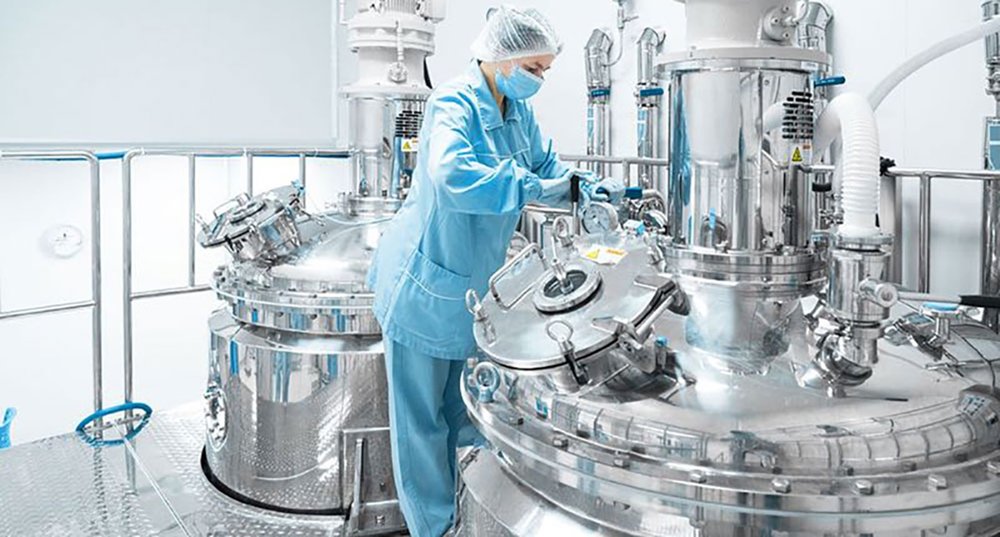www.industry-asia-pacific.com
26
'19
Written on Modified on
Stainless Steel Products in Contemporary Bioprocessing
ASEPCO's Mark Embury on the shift from stainless steel to single-use systems in the pharmaceutical manufacturing sector.

An increased capacity permits more product; greater flexibility allows plants to explore different processes; lesser outlay means higher profits and a greater opportunity for growth, research and development.
Each factor has led to the development and adoption of single-use systems (SUS). Where permanent, stainless steel systems have proven—for many years—to be robust and straightforward to maintain, the introduction of SUS has given biomanufacturers more choices when it comes to how they make their products.
Reflecting on these slow and subtle shifts in the industry, Watson-Marlow Fluid Technology Group spoke to Mark Embury of the American Society of Mechanical Engineers Bioprocessing Equipment (ASME BPE) and valve manufacturer, ASEPCO.
We’ve seen stainless steel products being described as ‘legacy’ products, but they still dominate commercial manufacturing. In your opinion, how can advances in single-use technologies help support advances in stainless steel technologies and vice versa?
This requires an analysis of a process to determine which pieces of equipment would be most cost-effective and produce the lowest risk for each step of that specific process.
The answer will be different from the process to process and will change as technology changes. Currently, for example, there are several different disposable sampling systems on the market. These systems make sampling quick and efficient, in most cases. However, they do have a limited number of samples that can be taken.
So, let’s say one decides to use a bag sampling system that can only take five samples before it has to be replaced. At the same time, the process might require many more samples than five to be taken. By combining this sampling system with a stainless steel valve, the number of samples can be unlimited by allowing the bag system to be removed and replaced after every five samples and at the same time allowing the sample pathway to be sterilised between each sample.
Personalised medicines and small batches
Do you predict so-called personalised medicines, or medicines tailored to smaller patient populations, will dominate the industry in the future?
I think personalised medicine will dominate the industry from a diagnostic perspective and this will allow the right drugs to be given to the right people to improve the effectiveness of healthcare.
This may not necessarily lead to most medicines being produced in small quantities, at least in the near term. It may just mean that the targeting of treatments can be done better. For some treatments, this may mean small production batches and for others, it may mean better distribution.
I think there is a long road to making actual individualised treatments possible. Take CAR-T therapies, which have been proven to be very effective, the costs for these treatments typically run in the hundreds of thousands of dollars, not something that is likely to be implemented for large groups of patients in the current healthcare environment.
Manufacturing costs
According to Embury, with the increasingly lower diagnostic costs and new technologies, getting the right—or at least better—treatment to patients is becoming easier. "For example, the cost of sequencing a person’s genome is about US$1000 today and is expected to be about $1 within the next 5-10 years.
With this information, alongside that which might be gathered from fitness or activity tracking data and other easily attained information, a doctor can quickly get a full picture of the patient that will allow for a much better and earlier diagnosis, ultimately improving treatment," he says.
Are unmet medical needs, with potentially large patient populations (cancer, dementia, Alzheimers, diabetes, etc.) going to be reliant on stainless steel in the next evolution of biomanufacturing?
These needs will be met with a combination of technologies. There will always be a place for stainless steel in process systems, between the volumes of large-scale production and the chemical compatibility of some process materials that can’t be handled by single-use products.
On the one hand, our ability to target individual treatments combined with increased titers and the flexibility of single-use systems means we can expect an increase in the use of these systems.
On the other hand, where processes are incompatible with single-use materials or where larger production volumes are more cost-effective or where the inherent risks of a disposable system outweigh those of a stainless steel system, we expect to see the continued use of these stainless steel systems.
From a supplier perspective, are drug developers now looking for a one-stop-shop when it comes to products and validation?
I believe that drug developers are—as they always have been—looking for ways to improve their process efficiencies. By getting the right information from suppliers to support validation, it can make their process more efficient.
For example, the validation information we provide throughout Watson-Marlow Fluid Technology Group benefits customers by making their validation easier. I see it as a value addition to our products.
I think customers, particularly with the advent of the Biophorum Operations Group (BPOG)—the biopharmaceutical trade association made up of manufacturers, developers and suppliers—are looking for ways to ensure more consistency of the products they are getting from vendors and understanding the differences between vendors who sell similar products.
By getting information from vendors, like extractable and performance data, they can get a better understanding of the impact a change from one product to another would make in their process and whether or not that change would improve their process or not.
www.watson-marlow.com

